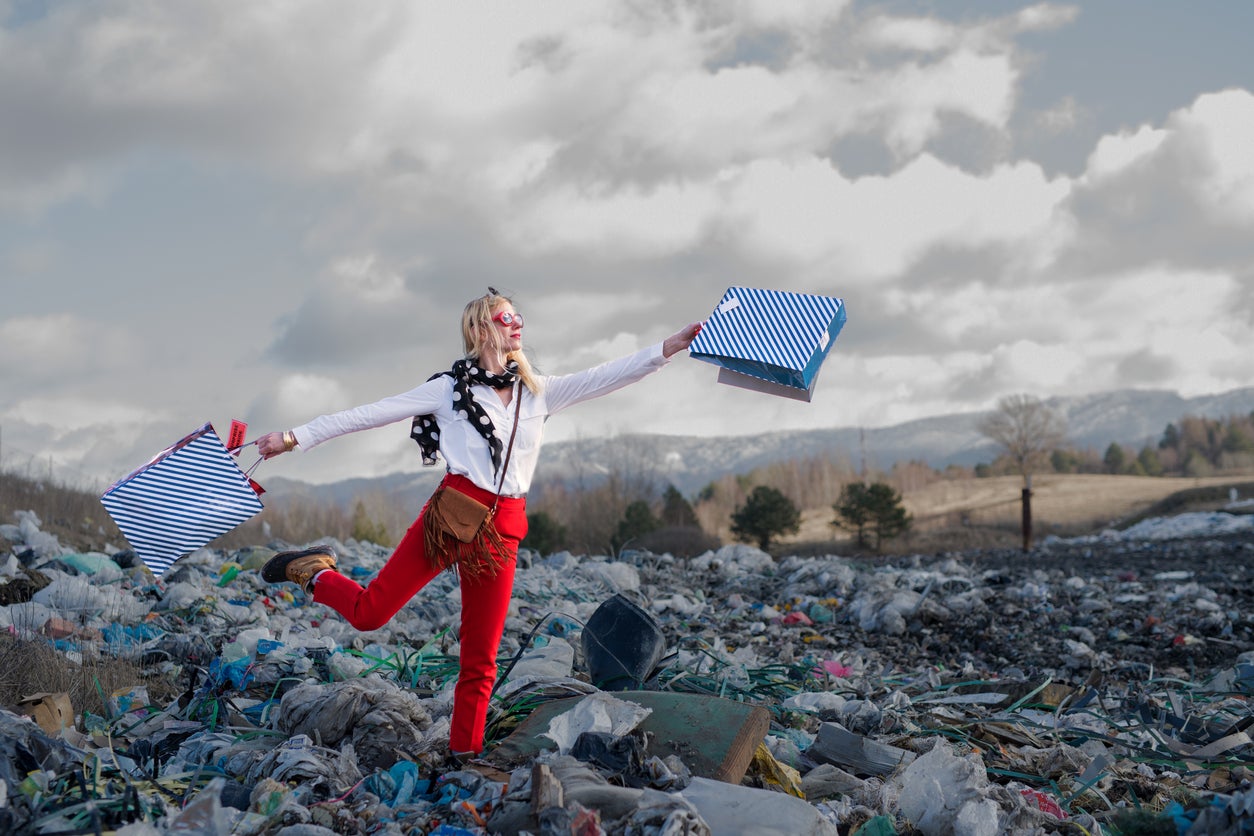Fast fashion isn’t cheap – the environment is paying for it
The ‘make do and mend’ generation has been replaced by the ‘wear it then chuck it’ generation – both consumers and manufacturers need to change their behaviour


As the capital gets kitted out for London Fashion Week, we need to challenge the fashion industry and its role in the climate crisis, its degradation of the environment and its undermining of workers’ rights.
Responsible for an estimated billion tonnes of carbon every year and using huge amounts of virgin materials, while promoting rampant consumerism, the fashion industry is wearing out the planet.
Fashion is the world’s third-largest manufacturing industry, responsible for up to 10 per cent of global emissions, which occur throughout the clothing supply chain. A single polyester T-shirt is responsible for around 5.5 kg of CO2 while a pure cotton shirt produced in China, is estimated to produce nearly 9kg of CO2.
To meet the demands of people wanting new cheap clothes, there has been an international expansion of fast fashion retailers which are exacerbating the impacts of the sector. This has replaced a “make do and mend” generation with a “wear it then chuck it” approach, as it’s cheaper to buy new rather than repair.
Corporations have made fashion appear disposable, and an estimated 200 million tonnes of clothes in the UK end up in landfill or an incinerator each year, rather than getting repaired, redesigned or donated to the long-established network of charity shops across the UK.
It’s not just the volume of clothes we consume that is the problem. It is also the materials used in them and the manufacturing processes involved.
Polyester and other plastic materials commonly used in clothing don’t biodegrade, meaning the clothes can last between 20 and 200 years in the environment. They’re also derived from petroleum, and the oil industry is the world’s largest polluter.
Around 700,000 microfibres in a synthetic clothes wash can be released, finding their way into our seas, oceans and ecosystems, according to a Plymouth University study. From the highest mountain to the deepest ocean, neither Mount Everest nor the Mariana Trench is free of microplastic pollution.
Biodegradable cotton also has its problems. Globally, 35 million hectares of cotton are under cultivation, according to a 2022 United States Department of Agriculture report. Most of this is produced with a heavy dependence on pesticides, which leads to pollution in surface and groundwater. It is also highly water-intensive, diminishing rivers and depleting groundwater. The most dramatic impact when it comes to irrigating cotton can be seen with the 85 per cent depletion of the Aral Sea, decimating wildlife habitats, fish populations and livelihoods.
As for denim, just one pair of jeans uses an incredible 3,781 litres of water. Carcinogenic dyes used in jeans are released into the environment, threatening wildlife and posing risks to workers’ health and safety. The popular “distressed” look for jeans involves sandblasting, which creates fine particles that can get into the lungs of workers.
We need to recognise that fast fashion isn’t cheap – someone or something somewhere is paying for it. We have known for decades that fast fashion is often made in countries with limited or non-existent workers’ rights. Some companies even move their manufacturing from place to place in search of ever-cheaper labour costs.
Garment workers’ wages are often way less than the living wage for their country, meaning workers cannot meet their basic needs such as rent, food, healthcare and education. They often work 14–16-hour days, seven days a week, and can be working overtime until 3am to meet the deadlines of fashion brands. Accidents, fires, injuries, and diseases are also frequent occurrences on textile production sites.
Many of the 170 million children engaged in child labour are involved in making textiles and garments, according to Unicef. This is a particular issue for fashion because much of the supply chain requires low-skilled labour and some tasks are seen to be better suited to children than adults.
Businesses need to be made to clean up their act and take responsibility for their impact on our environment and people’s rights. A 2019 Environmental Audit Committee report concluded that voluntary corporate social responsibility initiatives have failed to improve pay and working conditions or reduce waste.
It’s time for governments to legislate to create the standard that businesses should operate to across their whole supply chain. The Environmental Audit Committee recommended reforms to taxation to reward fashion companies that design products with lower environmental impacts, and to penalise those that do not. There was also a call to move from conventional to organic cotton and from virgin polyester to recycled PET to help reduce the negative impacts of the clothing industry.
As consumers, we also have a key role to play. Clothes shopping for the planet doesn’t mean we need to stop loving clothes or stop dressing to impress. It does call us to speak out against the toxic aspects of the fashion industry and commit to repaired, redesigned, reused and recycled clothing and buying from an increasing range of sustainable sources.
Amelia Womack is deputy leader of the Green Party of England and Wales

Join our commenting forum
Join thought-provoking conversations, follow other Independent readers and see their replies